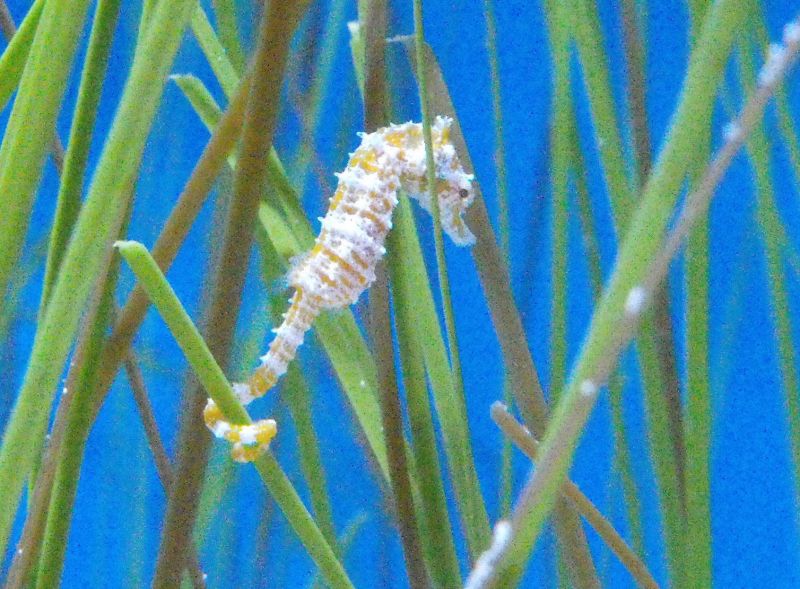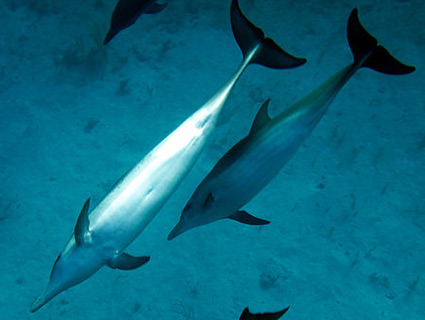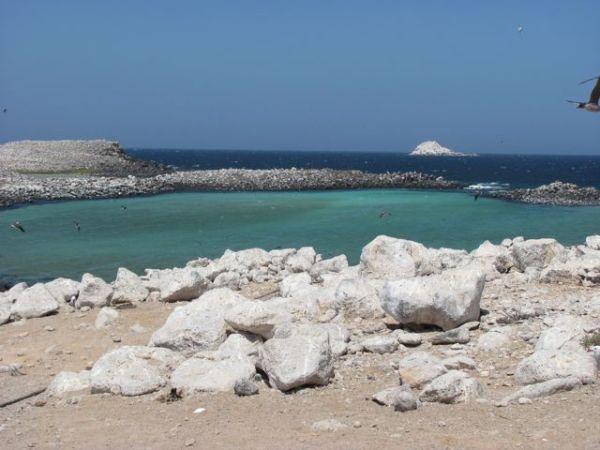 Rasa Island, Mexico. Photo © Julia Whitty
Rasa Island, Mexico. Photo © Julia Whitty
I’m finally back from Mexico’s remote Isla Rasa, a tiny outpost in the Gulf of California and one of the most important seabird breeding islands in the world. The island covers a bare 138 acres/56 hectares. Yet it’s home to half a million birds—many more if it’s a good enough year for the birds to produce eggs, incubate them, and hatch their chicks.
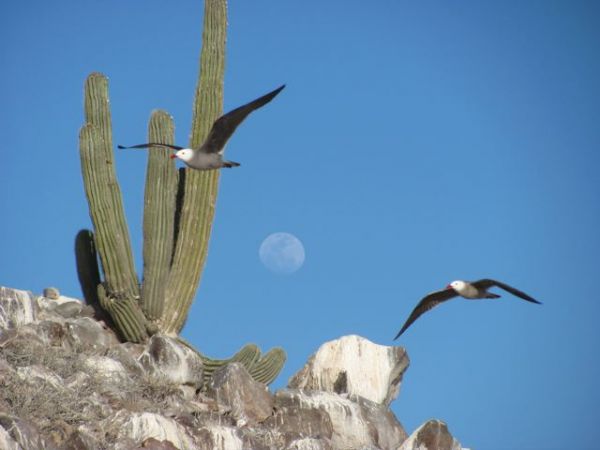 Heermann’s gulls and a cardón cactus, both endemic to the Gulf of California and the Baja Peninsula. Photo © Julia Whitty.
Heermann’s gulls and a cardón cactus, both endemic to the Gulf of California and the Baja Peninsula. Photo © Julia Whitty.
Some 95 percent of all Heermann’s gulls (Larus heermanni) nest on Isla Rasa. These are small, pretty, polite gulls—compared to their much larger Larid relatives.
Heermann’s gull:
-
length 19 inches/48 centimeters
-
wingspan 51 inches/129 centimeters
Great black-backed gull:
-
length 30 inches/76 centimeters
-
wingspan: 65 inches/165 centimeters
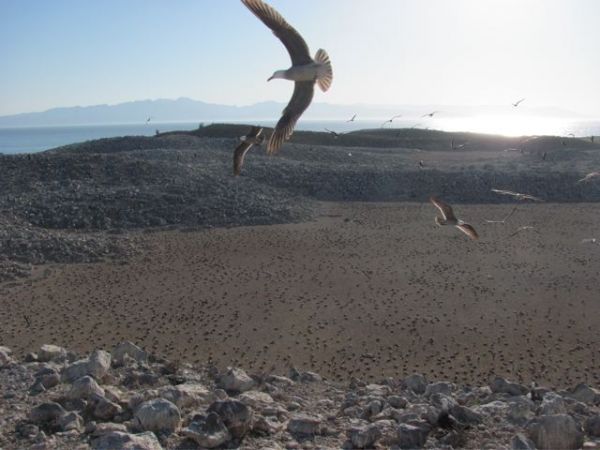 Grand Central Station Valley, Isla Rasa, Mexico. Photo © Julia Whitty.
Grand Central Station Valley, Isla Rasa, Mexico. Photo © Julia Whitty.
In the photo above, you can see the nesting territories of the gulls dotting the island’s valleys. Gulls also nest throughout the rocky hillsides and ridgelines.
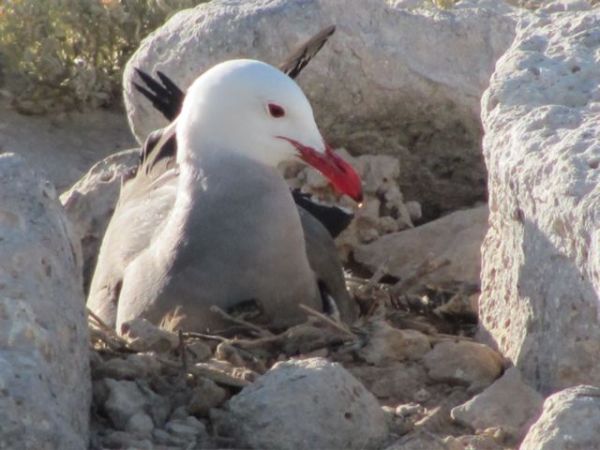 Heermann’s gull. Photo © Julia Whitty.
Heermann’s gull. Photo © Julia Whitty.
In fact Heermann’s gulls nest on every square inch of this sunbaked, windswept island—except where thickets of cholla cactus have taken hold… and where colonies of terns have usurped them.
 Elegant tern colony in the midst of Heermann’s gulls, Isa Rasa, Mexico. Photo © Julia Whitty.
Elegant tern colony in the midst of Heermann’s gulls, Isa Rasa, Mexico. Photo © Julia Whitty.
In the photo above you can see how elegant terns (Thalasseus elegans) have successfully muscled into the territories of gulls in one of the island’s eleven valleys.
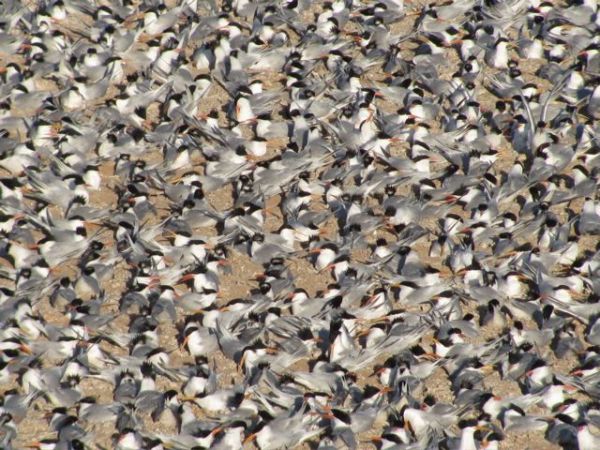 Elegant terns, Isla Rasa, Mexico. Photo © Julia Whitty.
Elegant terns, Isla Rasa, Mexico. Photo © Julia Whitty.
The terns nest closer together than the gulls. This, and the fact that they move into gull territories en masse and often under cover of night, means they generally get what ground they want—even though they’re smaller birds.
Heermann’s gull:
-
length 19 inches/48 centimeters
-
wingspan 51 inches/129 centimeters
Elegant tern:
-
length 17 inches/43 centimeters
-
wingspan 34 inches/86 centimeters
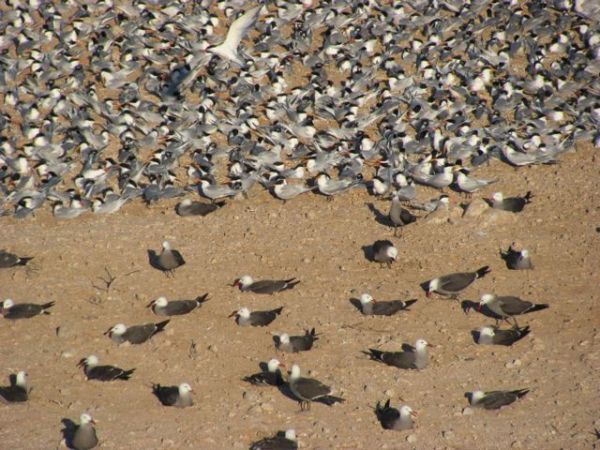 Heermann’s gulls and elegant terns, Isla Rasa, Mexico. Photo © Julia Whitty.
Heermann’s gulls and elegant terns, Isla Rasa, Mexico. Photo © Julia Whitty.
Here’s what the two species look like nesting side-by-side.
You can probably already tell from the numbers of birds in the photos that’s it’s been a very good year so far on the island.
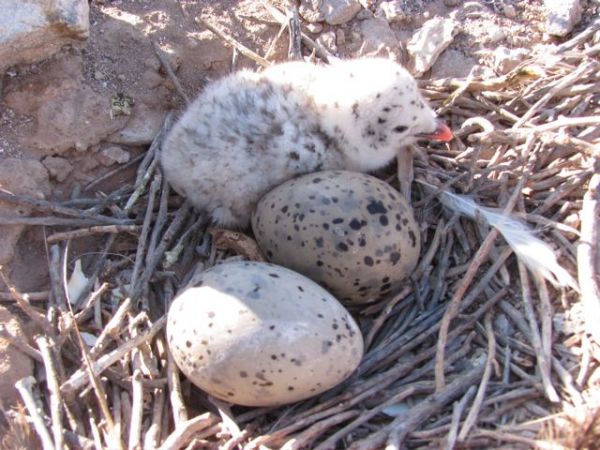 Heermann’s gull chick and eggs. Photo © Julia Whitty.
Heermann’s gull chick and eggs. Photo © Julia Whitty.
By the time I left, chicks were hatching everywhere and the whole island was transformed from the calm (in comparison) business of incubating to the furious business of feeding tiny insatiable stomachs.
In a forthcoming Mother Jones article I’ll be writing more about why this year may be the best for the Gulf’s seabirds since the mid-19th century.
